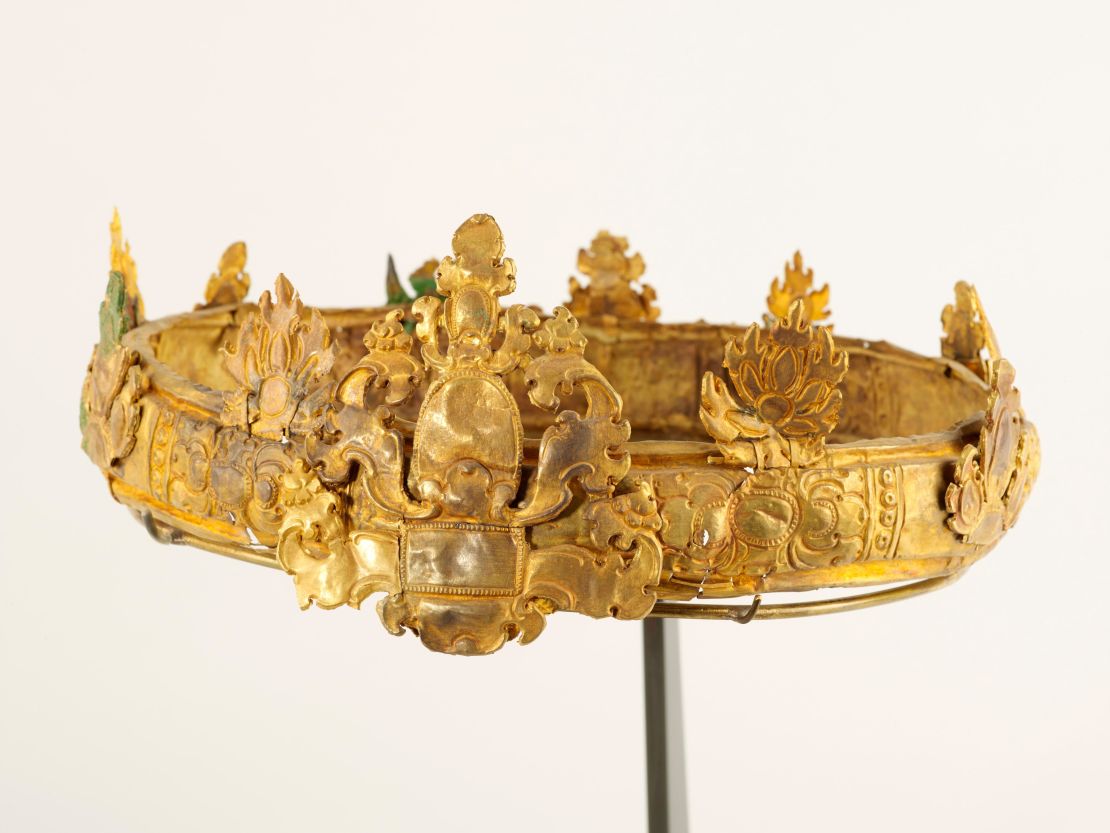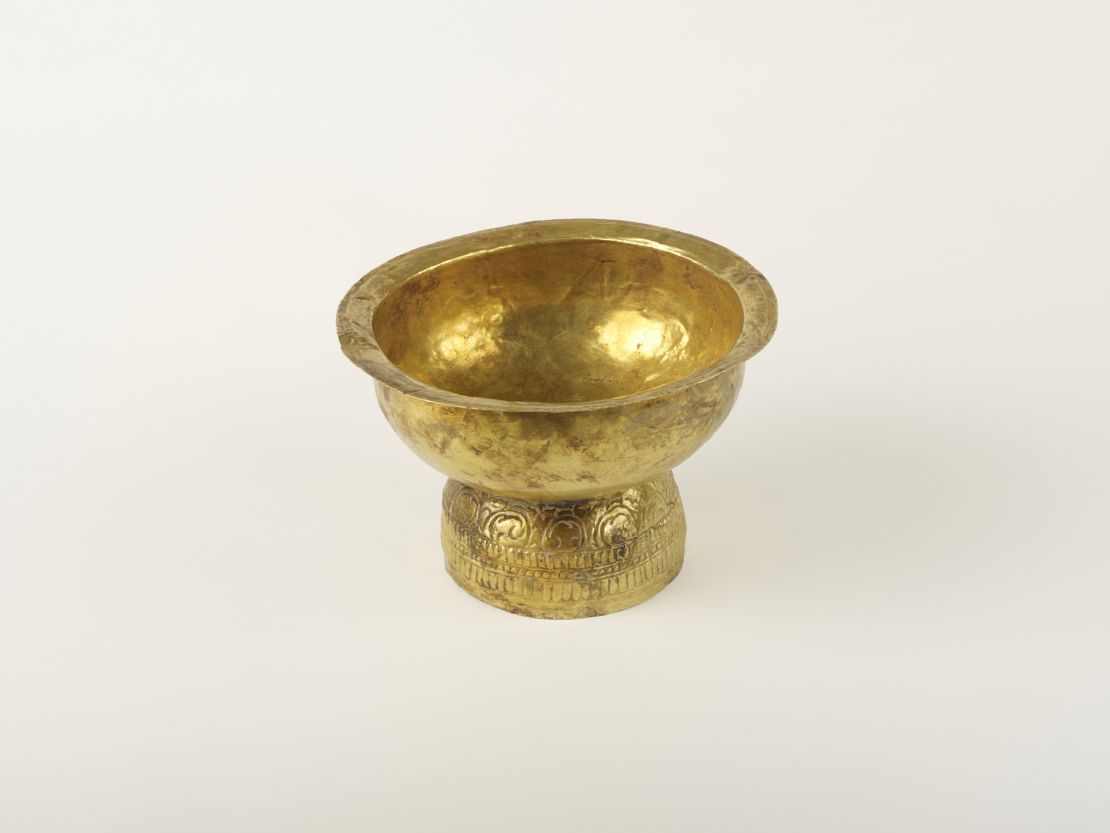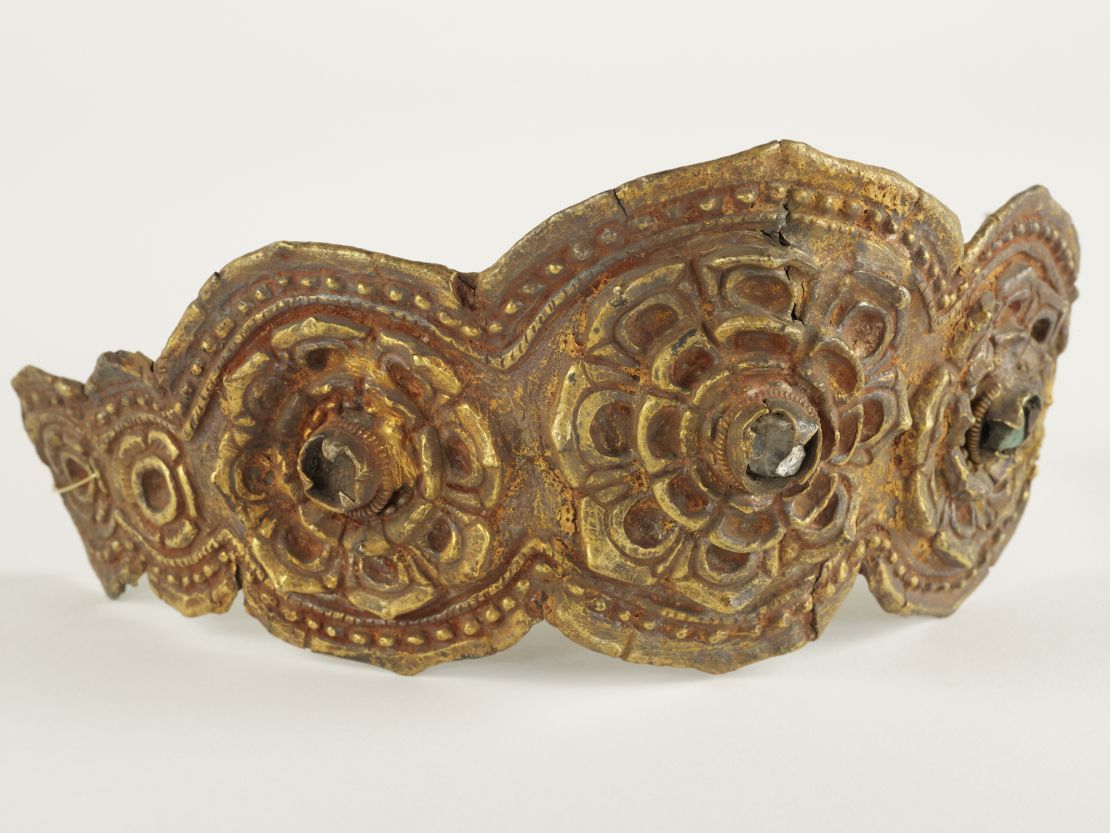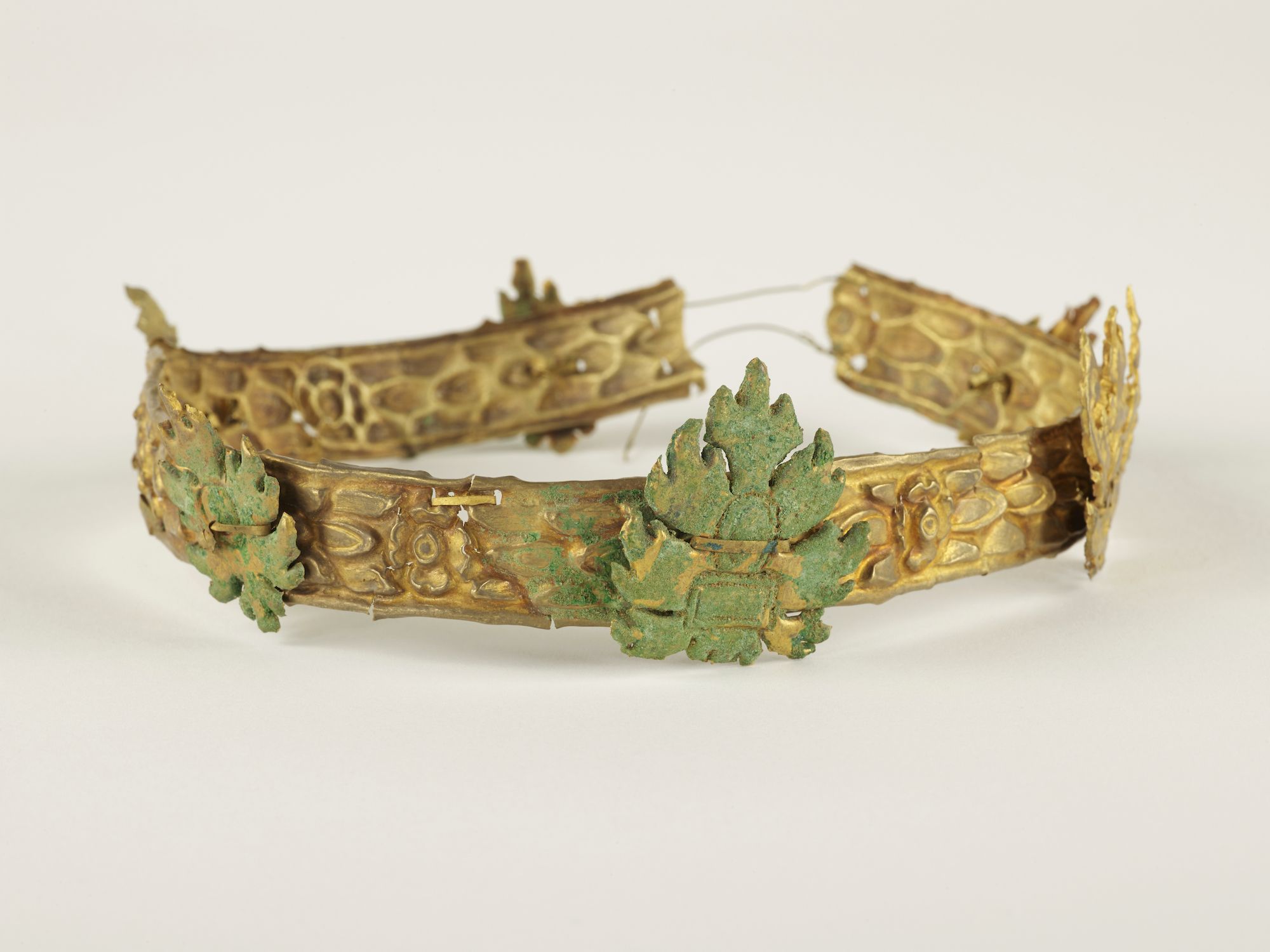While most monarchies’ crown jewels are heavily protected or given pride of place in a museum, dozens of Cambodia’s were, until recently, stashed away in four boxes near London.
The pieces have now been safely returned to Cambodia, the country’s Ministry of Culture and Fine Arts announced in a press release Monday.
The crown jewels were among 77 pieces of centuries-old gold jewelry handed over by the family of Douglas Latchford, a British antiquities dealer and leading scholar on Khmer art who in 2019 was accused by US authorities of trafficking artifacts looted from Cambodia.
After Latchford died in 2020, with the charges still pending, his daughter agreed to return all the Khmer antiquities she had inherited from her father, including at least 100 statues and carvings. Latchford’s collection is considered of such cultural significance that Cambodia’s national museum in Phnom Penh is being expanded to accommodate it.
Lawyer Bradley Gordon, who advises the country’s culture ministry and is leading Cambodia’s efforts to repatriate stolen artifacts, first saw the jewels last summer when a representative for Latchford’s family took him to a parking lot in the English countryside outside London. There, in the back of a car, sat four boxes containing a collection of Cambodia’s crown jewels.

The trove includes several crowns, necklaces, bracelets, belts, earrings, arm bands and amulets, according to the culture ministry. One of the more unusual pieces, Gordon said, is a gold bowl that likely would have been used by kings to eat rice. However, because the artifacts are believed to have been looted, their exact provenance and usage is unknown.
“There’s not an encyclopedia of Khmer gold to turn to, other than what was written by Douglas Latchford,” Gordon said in a phone interview.
The items are thought to hail either from the Angkorian period, which began in the 9th century, or earlier. But other details, like who owned the jewelry, will be determined only after additional study, Gordon added.
The 77 pieces are expected to go on display at Cambodia’s national museum in the spring. Many of the artifacts have never been seen by the public, though photos of some of them were published in a book that Latchford co-authored entitled “Khmer Gold: Gifts of the Gods,” the ministry said in its press release.
“It is an astonishing collection,” Gordon said, adding that the recently recovered items of jewelry were Latchford’s “prized possessions, from what I understand.”

According to Gordon, many of the pieces were likely used to adorn statues in temples, while others, like the crowns and necklaces, may have been worn by the Angkorian royal family. US prosecutors say that, like much of Cambodia’s missing cultural heritage, items handled by Latchford were illegally removed from the country during the turbulent years of Pol Pot’s Khmer Rouge regime and the subsequent civil war.
The artifacts’ return comes as the Cambodian government increases its efforts to repatriate relics taken from temples and archeological sites — and as Western museums face growing calls to give back treasures taken illicitly or by force.
Speaking to CNN via email in 2021, Latchford’s daughter said that “many” Khmer items in her family’s collection had “impeccable provenance,” although she pledged to return them all, regardless of whether she believed they had been looted. Gordon meanwhile said that Cambodia considers all items recovered from Latchford’s collection, and any he sold to others, to be stolen.

“Cambodia never gave export license for any of this, so in our view it’s stolen and it needs to come home,” he said.
In a statement about the latest repatriations, Cambodia’s Minister of Culture and Fine Arts, Phoeurng Sackona, said: “We consider such returns as a noble act, which not only demonstrates important contributions to a nation’s culture, but also contributes to the reconciliation and healing of Cambodians who went through decades of civil war and suffered tremendously from the tragedy of the Khmer Rouge genocide.”
Since Latchford’s family agreed to return the items in 2020, several batches of Khmer antiquities have been handed back, both from the dealer’s personal collection and as part of ongoing criminal investigations. In August 2022, New York officials returned 30 cultural artifacts to Cambodia, including a 10th-century Khmer sculptural “masterpiece,” that had been plundered and illegally sold to private collectors and a US museum.
Gordon said Cambodia expects even more items to be returned soon, representing hundreds of repatriated antiquities in total. More than 100 objects from Latchford’s personal collection have already been returned, the lawyer said, adding that the late dealer’s daughter “has another 50 bronzes and … more stone statues that she’s agreed to give back.”
If Cambodia finds and repatriates items Latchford sold to dealers, collectors and museums around the world, the number of recovered artifacts could double. “At the end of the day, we might have brought home maybe 300 objects,” Gordon said.

